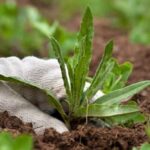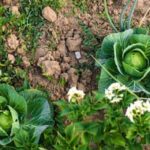Are you interested in starting your own vegetable garden but feeling overwhelmed by where to begin? Look no further. This article will serve as a comprehensive guide to vegetable gardening for dummies. Whether you’re a complete novice or have some experience with gardening, this guide will provide you with the essential knowledge and skills needed to achieve a successful and bountiful vegetable garden.
In this section, we will cover the basics of vegetable gardening, including selecting the right location for your garden, understanding the necessary tools and equipment, choosing the best vegetables to grow, soil preparation, planting and caring for your vegetables, dealing with common pests and diseases, harvesting your produce, and valuable tips and tricks for successful vegetable gardening.
By the end of this article, you will have all the information you need to embark on your own vegetable gardening journey with confidence.
Whether you have limited outdoor space or are eager to become more self-sufficient by growing your own food, vegetable gardening is a rewarding and enjoyable activity that can be easily learned by beginners. With the right guidance and resources, anyone can successfully cultivate their own fresh and nutritious produce at home. So let’s dig in (quite literally.) and explore the world of vegetable gardening together.
Choosing the Right Location for Your Vegetable Garden
When it comes to vegetable gardening for dummies, one of the most important factors to consider is choosing the right location for your garden. The success of your vegetable garden depends greatly on where you choose to plant it. The ideal location for a vegetable garden should receive at least 6-8 hours of direct sunlight each day, have good drainage, and be close to a water source.
If you are limited on space, consider planting a container garden on a sunny patio or balcony. This allows for flexibility in moving your plants to follow the sun if necessary. Raised beds are also an excellent option for small spaces or areas with poor soil quality.
It’s also important to consider proximity to your home when choosing a location for your vegetable garden. Placing the garden near your house makes it easier to access and attend to, which can make it more likely that you will keep up with its maintenance.
Considering these factors when choosing the location for your vegetable garden sets you up for success from the start, ensuring that your plants have what they need to thrive and produce a bountiful harvest.
| Factors to Consider | Location Options |
|---|---|
| 6-8 hours of direct sunlight each day | In-ground garden, container garden on a sunny patio or balcony |
| Good drainage | Raised beds |
| Proximity to water source and your home | Near your house for easy access and maintenance |
Essential Tools and Equipment for Beginners
When starting a vegetable garden, it is essential to have the right tools and equipment to ensure that you can properly care for your plants. As a beginner in vegetable gardening for dummies, it can be overwhelming to know which tools are necessary and which ones are just nice to have.
The good news is that you don’t need a lot of fancy equipment to get started, but there are a few basics that will make your gardening experience much more enjoyable.
One of the most important tools for any vegetable gardener is a sturdy hand trowel. This small handheld tool is perfect for digging small holes for planting seedlings, transplanting small plants, and loosening soil in tight spaces. A garden rake is also essential for leveling the soil, breaking up clumps, and removing debris.
A watering can or hose with a gentle sprayer attachment is necessary for keeping your plants hydrated, especially during hot summer months. Additionally, a pair of garden gloves will protect your hands from thorns, prickly stems, and rough surfaces while working in the garden.
In terms of equipment, beginner vegetable gardeners should consider investing in a pair of pruning shears for trimming back overgrown plants and harvesting vegetables. For larger gardens or yards with heavy foliage, a push mower or weed whacker might be necessary to keep everything neatly trimmed. These basic tools and equipment will set you on the right path to successful vegetable gardening as a beginner.
Selecting the Best Vegetables for Your Garden
When it comes to vegetable gardening for dummies, one of the most important decisions to make is which vegetables to grow in your garden. Whether you have limited space or are a total beginner, choosing the right vegetables can make all the difference in your gardening journey.
Consider Your Climate and Growing Season
Before selecting the vegetables for your garden, it’s crucial to consider the climate and growing season in your area. Some vegetables thrive in cooler temperatures, while others need plenty of warmth and sunlight. Research the typical weather patterns and frost dates in your region to determine which vegetables will grow best.
Start With Easy-to-Grow Vegetables
For beginners, starting with easy-to-grow vegetables can help build confidence and ensure a successful harvest. Options such as tomatoes, lettuce, carrots, and radishes are great choices for novice gardeners. These vegetables are relatively low-maintenance and forgiving, making them ideal for those new to vegetable gardening.
Take Stock of Your Preferences
Consider your personal preferences when choosing vegetables for your garden. Think about what you enjoy eating and cooking with. If you love fresh salads, consider growing cucumbers, peppers, and different varieties of lettuce. If you’re a fan of Italian cuisine, herbs like basil and oregano paired with tomatoes might be a perfect fit.
By carefully considering your climate, starting with easy-to-grow options, and taking stock of your own preferences, you can select the best vegetables for your garden as a newbie vegetable gardener. Remember that experimentation is key – don’t be afraid to try out different veggies until you find what works best for you.
Preparing the Soil for Planting
When it comes to vegetable gardening for dummies, one of the most crucial steps in ensuring a successful harvest is preparing the soil for planting. Healthy soil provides the necessary nutrients and support for your vegetables to thrive. Here are some essential steps to get your soil ready for planting:
1. Test your soil: Before you start preparing your garden beds, it’s important to know the composition of your soil. You can purchase a simple DIY soil test kit or send a sample to a local agricultural extension service for analysis. This will determine the pH level and nutrient content of your soil, allowing you to make any necessary adjustments.
2. Remove weeds and debris: Clear the area where you plan to plant your vegetables from any weeds, rocks, or debris. Weeds can compete with your vegetables for nutrients and water, so it’s important to remove them before planting.
3. Add organic matter: Once you’ve cleared the area, it’s time to enrich the soil with organic matter such as compost, well-rotted manure, or leaf mold. This helps improve the texture and fertility of the soil, providing a better environment for plant roots to grow.
4. Tilling and amending: Use a tiller or a digging fork to loosen the soil and incorporate the organic matter. This will also help improve drainage and aeration in heavy or compacted soils.
By following these steps, you’ll be on your way to creating a healthy and fertile environment for your vegetables to grow. Remember that healthy soil is key to successful vegetable gardening for dummies, so take the time to prepare it properly before planting.
Planting and Caring for Your Vegetables
After you have prepared the soil and chosen the best vegetables for your garden, it’s time to plant and care for your vegetables in order to ensure a successful harvest. When it comes to planting, it’s important to follow the instructions on the seed packets or plant labels. Make sure to space your plants according to their specific requirements to allow them enough room to grow.
Once your vegetables are planted, it’s essential to regularly water them, especially during dry spells. Vegetables generally need about 1-2 inches of water per week, either from rainfall or irrigation. It’s important to water at the base of the plants in the morning or early evening to prevent evaporation loss.
In addition to watering, proper maintenance and care are crucial for the health of your vegetable garden. This includes regular weeding to prevent competition for nutrients, as well as monitoring for any signs of pests or diseases. Depending on the type of vegetables you’re growing, staking or providing support may also be necessary as they grow. By staying attentive and proactive in caring for your vegetables, you can help ensure a bountiful harvest.
Lastly, fertilizing is an important aspect of caring for your vegetables. Using a balanced fertilizer can help provide essential nutrients that may be lacking in the soil. However, it’s important not to over-fertilize, as this can harm your plants. Following these guidelines will help new vegetable gardeners successfully care for their plants throughout the growing season.
The process of planting and caring for vegetables may seem daunting at first, but with practice and dedication, even beginners can achieve success in their vegetable gardens. Whether you choose raised beds or traditional row planting, taking the time to properly care for your plants will result in a rewarding harvest come harvest time.”vegetable gardening for dummies“.
Common Pests and Diseases to Watch Out For
When beginning a vegetable garden, it is important for beginners to be aware of common pests and diseases that may affect their plants. These pests and diseases can cause significant damage to your garden if not identified and addressed promptly. By being proactive in preventing and managing these issues, you can increase the likelihood of a successful harvest. Below are some common pests and diseases to watch out for in your vegetable garden.
Common Pests
One of the most common pests that can wreak havoc on a vegetable garden is aphids. These small insects feed on plant sap, causing stunted growth and distorted leaves. Another common pest is the cabbage worm, which feeds on cabbage, kale, and other cruciferous vegetables. Additionally, slugs and snails can also be problematic, leaving behind holes in leaves and partially eaten fruits.
Common Diseases
There are various diseases that can affect vegetable plants, such as powdery mildew, blight, and root rot. Powdery mildew appears as a white powdery substance on leaves, while blight causes dark spots on foliage and can lead to rapid plant death. Root rot occurs when plants are overwatered or grown in poorly-drained soil.
Preventative Measures
To prevent pest infestations and disease outbreaks, it is important to practice good garden hygiene by removing debris and keeping the garden area clean. Additionally, using organic pesticides and fungicides can help control pest populations without harming beneficial insects or the environment. Regularly inspecting plants for signs of infestation or disease will also allow for early intervention.
By being aware of these common pests and diseases and taking preventative measures to protect your vegetable garden, you can increase the likelihood of a bountiful harvest. Remember that early detection is key in managing these issues effectively. With proper care and attention, you can minimize the impact of pests and diseases on your garden’s success.
Harvesting and Enjoying the Fruits of Your Labor
After weeks or even months of hard work, it’s finally time to reap the rewards of your vegetable garden. Harvesting your produce can be a very rewarding and satisfying experience, but it’s important to do it at the right time and in the right way to ensure the best flavor and quality. Here are some tips for harvesting and enjoying the fruits of your labor:
- Harvest at the Right Time: Each vegetable has its own optimal harvesting time. For example, tomatoes should be picked when they are fully colored but still firm, while lettuce is best harvested when the leaves are young and tender. Refer to gardening books or online resources for specific guidance on when to harvest each type of vegetable.
- Use the Right Tools: Depending on what you’re harvesting, you may need different tools such as pruners, shears, or a trowel. Using the right tools can help ensure a clean cut and minimize damage to your plants.
- Handle with Care: When harvesting delicate vegetables like berries or herbs, handle them gently to avoid bruising or damaging the plant. This will help preserve the quality and flavor of your produce.
Once you’ve harvested your fresh veggies, it’s time to enjoy them. There’s nothing quite like the taste of a perfectly ripe tomato or a freshly picked zucchini. Whether you eat them raw in a salad, cook them into a delicious meal, or preserve them for later use, there are countless ways to savor the fruits of your labor from your vegetable garden.
Tips for Enjoying Your Harvest
- Try new recipes: Experiment with different cooking methods and recipes to make the most of your harvest. Roasting vegetables brings out their natural sweetness, while salads showcase their crispness and freshness.
- Preserve for later: If you have an abundance of produce, consider preserving it by freezing, canning, or pickling. This will allow you to enjoy your homegrown vegetables long after the growing season has ended.
- Share with others: If you have more than enough vegetables for yourself, consider sharing your bounty with friends, family, or local food banks. It’s a great way to spread joy and goodwill with others while reducing food waste.
Tips and Tricks for Successful Vegetable Gardening for Dummies
In conclusion, vegetable gardening for dummies can be a rewarding and enjoyable experience with the right knowledge and guidance. By following the tips and tricks provided in this article, beginners can successfully start and maintain their own vegetable garden. From choosing the right location, selecting the best vegetables, preparing the soil, to caring for the plants and harvesting the crops, each step is crucial to the success of your garden.
One key tip for successful vegetable gardening for dummies is to start small and gradually expand as you gain more experience. This will allow you to manage your garden more effectively and learn from any mistakes along the way. Additionally, staying consistent with watering, weeding, and fertilizing your plants is essential for their growth and overall health.
Another important aspect to consider is pest and disease management. It’s vital to be proactive in preventing common pests and diseases in your garden by using natural remedies or organic pesticides when necessary. By being attentive to the needs of your plants and taking preventative measures, you can ensure a bountiful harvest.
Overall, vegetable gardening for dummies is not as daunting as it may seem at first. With patience, dedication, and the right resources, anyone can develop a green thumb and enjoy the satisfaction of growing their own fresh produce at home. So pick up your tools and get started on your very own vegetable garden today.
Frequently Asked Questions
How Do You Start a Vegetable Garden for Beginners?
Starting a vegetable garden for beginners requires some preparation. First, choose a location with at least 6-8 hours of sunlight. Then, prepare the soil by removing weeds and adding compost or organic matter. Finally, decide what vegetables to grow and plant accordingly.
What Vegetables Are Easiest to Grow for Beginners?
For beginners, it’s best to start with easy-to-grow vegetables such as lettuce, tomatoes, carrots, and radishes. These vegetables are relatively low-maintenance and can thrive in various conditions, making them ideal for novice gardeners.
What Is the Basic Layout of a Vegetable Garden?
The basic layout of a vegetable garden typically includes designated rows or raised beds for each type of vegetable. It’s important to consider spacing between plants to allow for proper growth. Additionally, incorporating trellises or cages for climbing plants like peas or cucumbers can help maximize space and yields in the garden.

If you’re looking to get into vegetable gardening, or are just looking for some tips on how to make your current garden better, then you’ve come to the right place! My name is Ethel and I have been gardening for years. In this blog, I’m going to share with you some of my best tips on how to create a successful vegetable garden.





